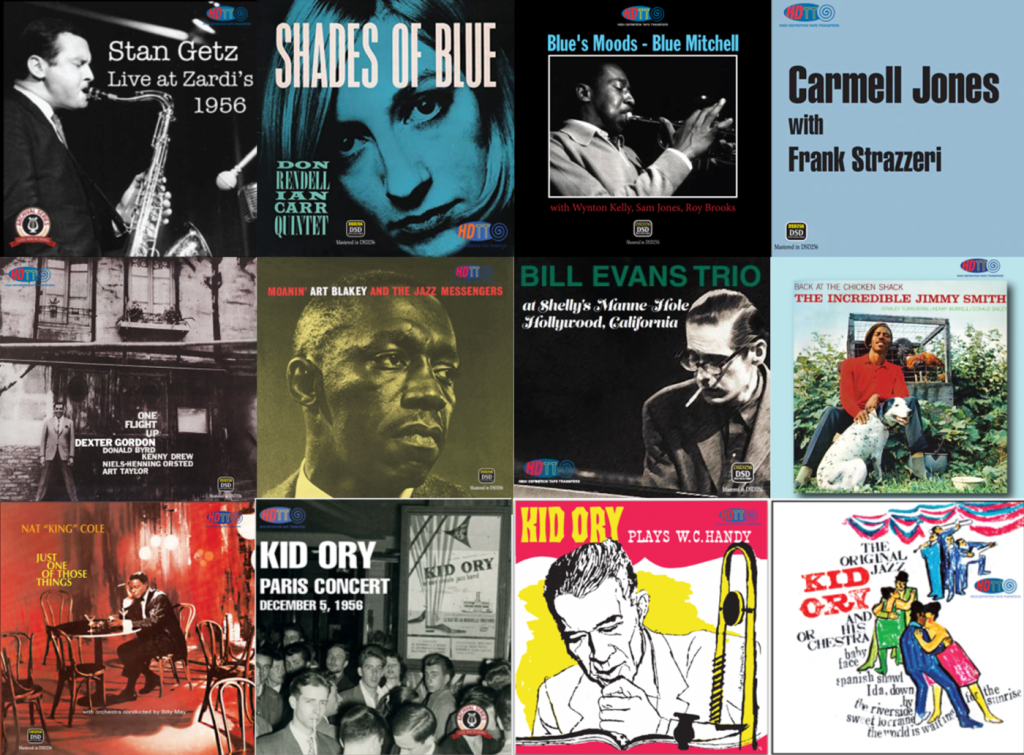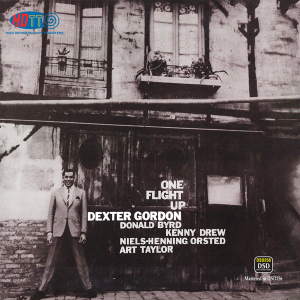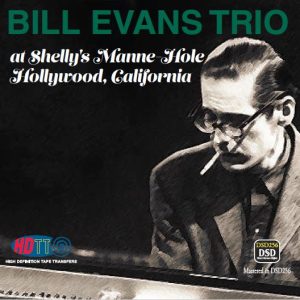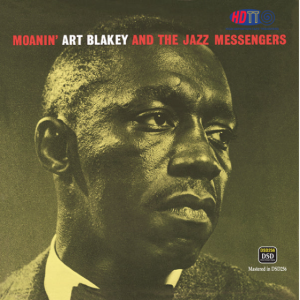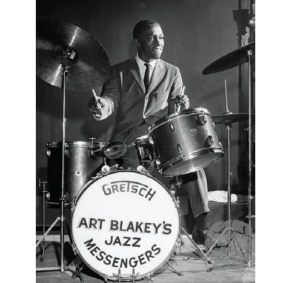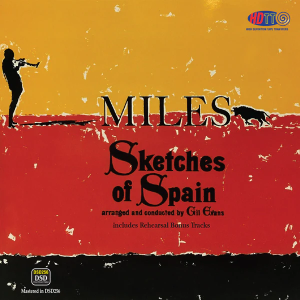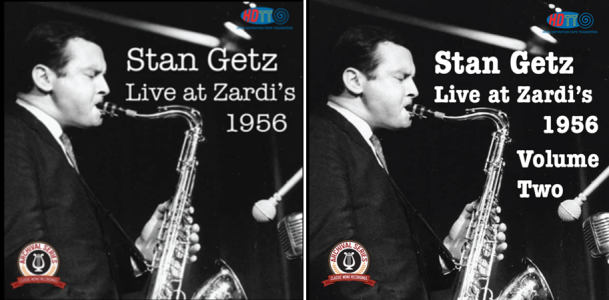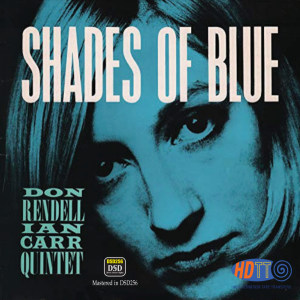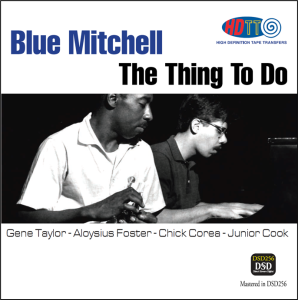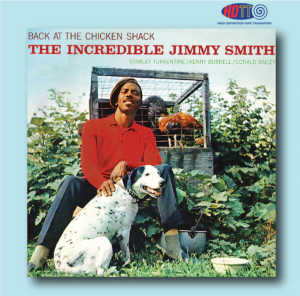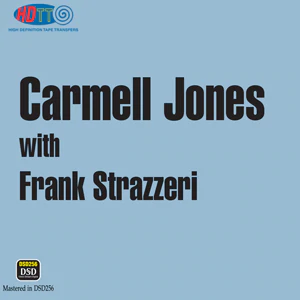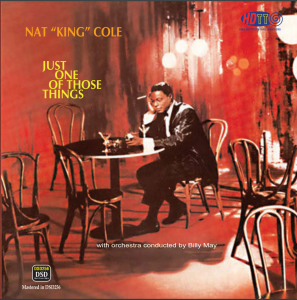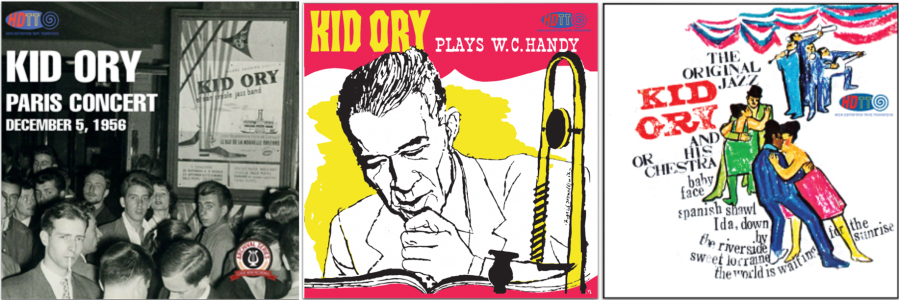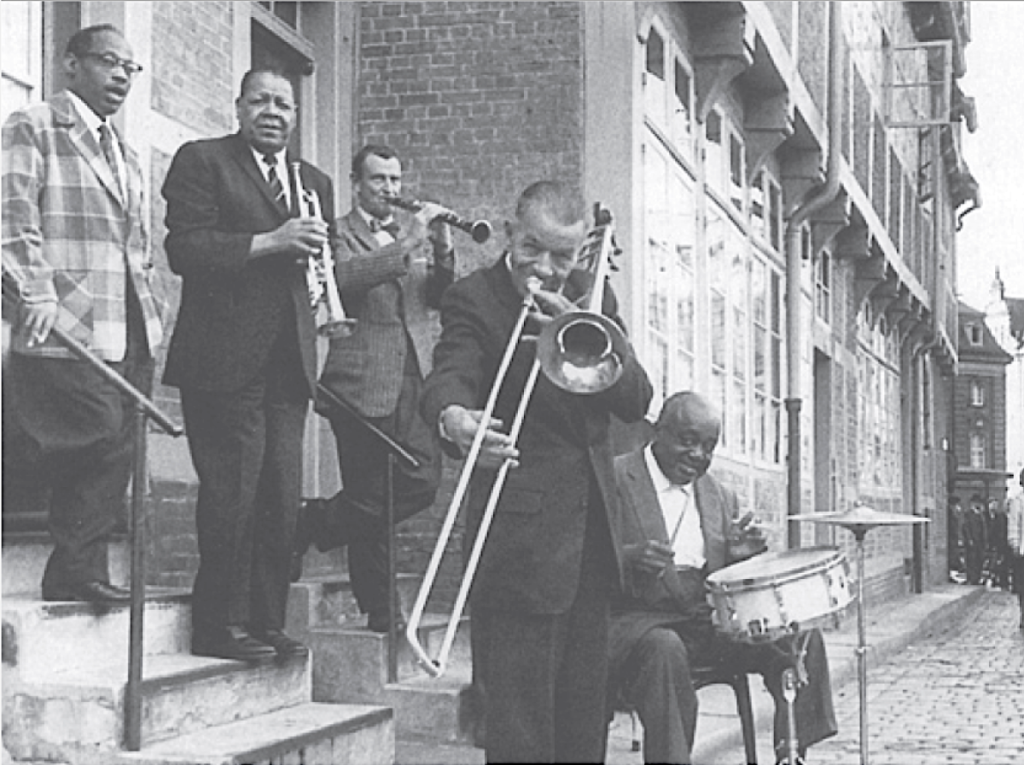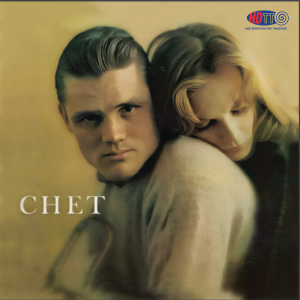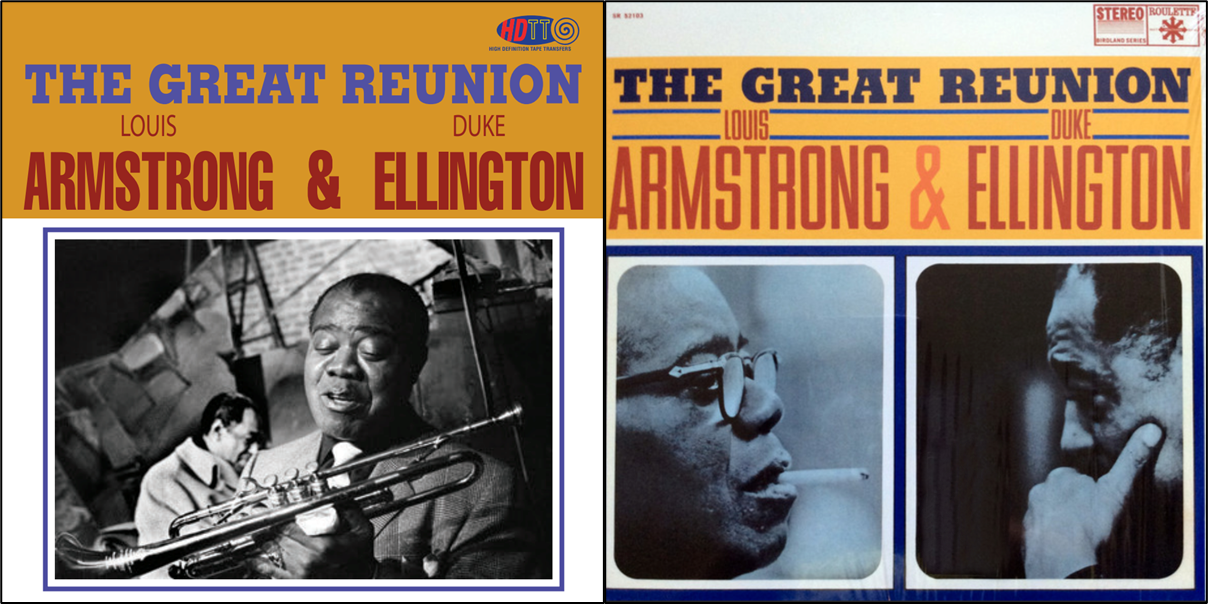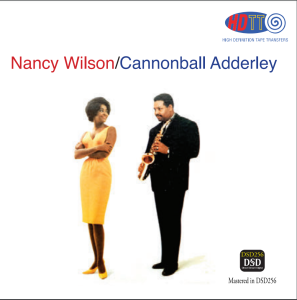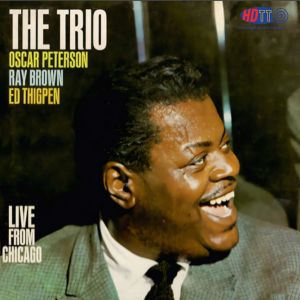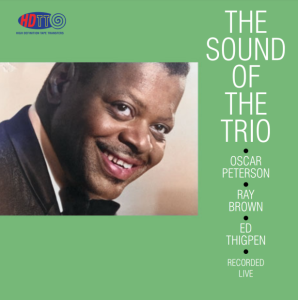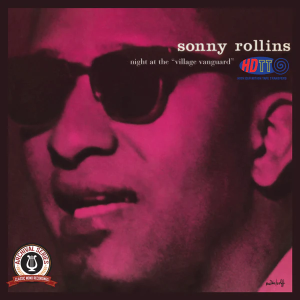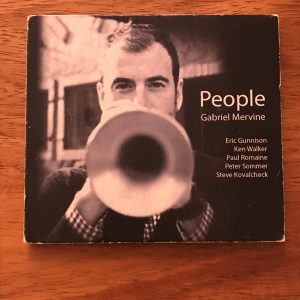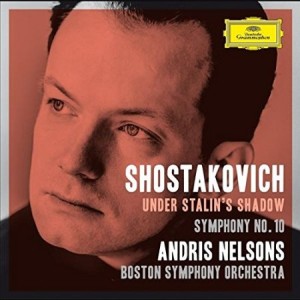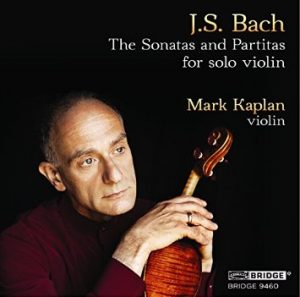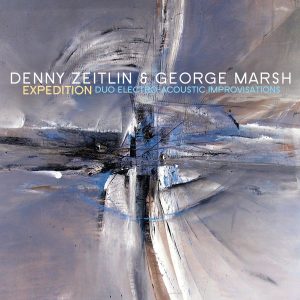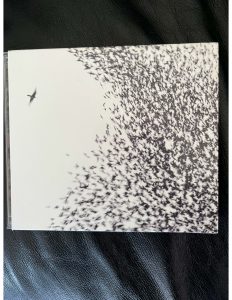Bob Witrak continues his quest for access to some great sounding tapes. Here are a few more jazz finds that knock my socks off. In addition to some great stereo releases, I'm including several mono releases from HDTT's Archival Series that are simply superb. We're all well past that notion from a few decades ago that the music has to be in stereo, right?
One Flight Up, Dexter Gordon with Donald Byrd, Kenny Drew, Niels-Henning Orsted, Art Taylor. HDTT 1964, 2022 (Pure DSD256) HERE
Just three tracks, but they’re a great 37 minutes of pure bliss. With a great lineup of musicians this is a terrific album recorded in Paris in 1964, produced by Francis Wolff for Blue Note. This album is entirely new to me. It shouldn't be, but one can't hear everything. Now I'm VERY glad to have found it in this excellent sounding release.
Dexter Gordon is, in my opinion, one of the greatest jazz musicians and saxophone players of all time. This album is an excellent illustration of his work.
On the opening track, "Tanya," a solid, soulful, Dexter Gordon gives plenty of room for his fellow band members to step up and shine. "Tanya," is a laid-back smoker by Donald Byrd covering a full 18 minutes, 10 seconds (the entire Side A in the original LP release). Dexter takes the opening gently, almost tenuously, before blasting into some some straight-up bop and the energy rises several notches before wandering through some quieter, more reflective, and amazing creativity.
As one reviewer commented, "And for those new to Dexter Gordon or new to jazz you have to realize that the great jazz musicians could float away in a dreamy blues melody where you lose all track of time and just are serenaded by them. That's what Tanya does."
Art Taylor and Kenny Drew are perfect accompanists on percussion and piano respectively. And bassist Niels-Henning Orsted demonstrates his inimitable value. Donald Byrd, who wrote the piece, follows hard after Gordon with drive and soaring notes in his extended solo. Simple an astounding piece of collaborative music-making.
The remaining two tracks continue with some excellent music and playing, particularly "Darn That Dream" which has rapidly become one of my favorites. The entire album is one to be played over and over again.
The sound quality in this Pure DSD256 transfer is excellent: transparent, detailed, very analog sounding, with excellent capture of the instruments. I don't have another version of it in my music library, but I doubt there is one that will surpass the sound quality of this one.
Bill Evans Trio at Shelly's Manne-Hole, Hollywood, California. HDTT 1963, 2017 (Pure DSD256) HERE
As one trips along into wonderful new finds, here's the Bill Evans Trio in a well-known, well-loved recording from 1963 on Riverside Records. The transfer is in Pure DSD256 from a 15ips 2-track tape, and it sounds as clean, open and detailed as one may ever hear.
The is the reformed trio with Chuck Israels, who followed Scott LaFaro on bass in autumn 1961, and Larry Bunker on drums, who had just joined the trio a month before this was recorded following Paul Motian's departure. Although the LaFaro-Motian lineup of the Bill Evans Trio is generally considered to be the strongest, Israels and Bunker make a strong case of their own in this 1964 release (recorded 1963).
The band's readings of such classics as "'Round Midnight" and "Stella By Starlight" are wonderful. The lesser-known tracks, such as "Swedish Pastry" and "Isn't It Romantic" make this recording a valuable addition to the music library here. This is splendidly sensitive and melodic jazz.
Art Blakey & The Jazz Messengers, Moanin'. HDTT 1958, 2022 (Pure DSD256) HERE
Art Blakey's Moanin' is regularly listed among the top 25 essential hard bob recordings. If you have any interest in hard bob, this album should be in your music library. It stands as one of jazz’s all-time recordings, largely because of its tunes, including the immediately popular "Moanin'" by 22-year-old pianist Bobby Timmons’ and four songs by 29-year-old musical director and tenor saxophonist Benny Golson: the relaxed "Along Came Betty," "Blues March" (complete with Blakey’s military drum beat opening the number), the lyrical "Are You Real?" and the powerful "The Drum Thunder Suite." A hard-bop cover of the Harold Arlen and Johnny Mercer tune "Come Rain or Come Shine" closes the set.
Quintet personnel for this recording also include the very young trumpeter Lee Morgan (age 20, and soon to be a huge Blue Note star in his own right) and bassist Jymie Merritt.
Recorded in a single session at engineer Rudy Van Gelder's Hackensack, New Jersey studio on October 30, 1958, and released by Blue Note in 1959, the album was originally titled Art Blakey and the Jazz Messengers. But the instant popularity of the bluesy opening track "Moanin'" resulted in the name change on re-reissue.
In this HDTT reissue, Bob Witrak has another huge sonic winner, in my opinion. This Pure DSD256 transfer from a 15ips tape sounds open, dynamic, and very alive. If I didn't know this was a 1958 tape, I'd never have guessed it from the sound of this transfer. It could have been recorded last week. For points of comparison, I have in my music library two other digital reissues of this album, both PCM of different resolutions (192kHz and 44.1kHz). Neither comes close to the naturalness of instrumental tone captured in the HDTT transfer. Simply listen to the opening notes on Bobby Timmons' piano and you know this will be an unfair comparison, totally in favor of the HDTT release. Neither of the other digital releases have the resolution and detail, the high end shimmer of Blakey's cymbals, the resolution of Golson's saxophone that makes is sound alive and authentic, or the great sense of air and openness around the instruments.
This is another superb reissue in the current series of 15ips jazz tapes that Bob has sourced for release. Don't miss it!
For those unfamiliar with Blakey and The Messengers, the group was co-founded in the early ‘50s by Blakey and pianist/songwriter Horace Silver, who bowed out in 1956 to pursue his solo career. Blakey had a remarkable sense for talent, and The Jazz Messengers became "the first onstage school of jazz" as Blakey enlisted young players to this revolving-door group not only to teach but also to continually refresh himself and his band with new energy, excitement and especially repertoire.
Throughout its existence, the Messengers served as the proving ground for dozens of greats, from tenor saxophonist Hank Mobley to trumpeter Wynton Marsalis. A sampling of the impressive musicians who performed with Blakey over the years include: pianists Wynton Kelly, Keith Jarrett, John Hicks, Cedar Walton, James Williams, Benny Green; saxophonists Wayne Shorter, Jackie McLean, Lou Donaldson, Gary Bartz, Johnny Griffin, Branford Marsalis, Donald Harrison, Bobby Watson, Kenny Garrett; trumpeters Clifford Brown, Woody Shaw, Freddie Hubbard, Donald Byrd, Terence Blanchard; bassists Wilbur Ware, Reggie Workman, Doug Watkins; guitarists Bobby Broom, Kevin Eubanks. Quite an amazing group of artists.
Miles Davis - Sketches of Spain, with rehearsal and outtake bonus tracks. HDTT 1960, 2022 (Pure DSD256) HERE
Sketches of Spain is one of Miles Davis' most enduring and innovative achievements (along with Kind of Blue, In a Silent Way, and Round About Midnight, of course). Recorded by Columbia Records between November 1959 and March 1960, was a collaboration with Gil Evans who wrote the musical arrangements with input from Davis. Davis' wife insisted he accompany her to a performance by flamenco dancer Roberto Iglesias. Inspired by the performance, Davis bought every flamenco album he could get.
Gil Evans explained how the album evolved: "We hadn't intended to make a Spanish album. We were just going to do the Concierto de Aranjuez. A friend of Miles gave him the only album in existence with that piece. He brought it back to New York and I copied the music off the record because there was no score. By the time we did that, we began to listen to other folk music, music played in clubs in Spain... So we learned a lot from that and it ended up being a Spanish album. The Rodrigo, the melody is so beautiful. It's such a strong song. I was so thrilled with that."
The arrangement of the adagio movement of Concierto de Aranjuez, a concerto for guitar by the contemporary Spanish composer Joaquín Rodrigo, takes up almost half the record. Following the faithful introduction of the concerto's guitar melody on flugelhorn, Evans' arrangement turns into a "quasi-symphonic, quasi-jazz world of sound." The folk songs in the album were inspired by recordings made by Alan Lomax in Galicia and Andalusia, which were released in 1955 by Columbia Masterworks.
The album achieved a degree of critical success immediately following its release, dividing music critics and listeners alike. Nonetheless, Evans and Davis won the 1961 Grammy Award for Best Jazz Composition of More Than Five Minutes Duration (a rather niche award). But, it has been durable, and it was ranked number 358 on Rolling Stone's list of the 500 greatest albums of all time.
So what's the sound quality like? In a word: superb. It is yet another excellent transfer from HDTT with all those characteristic of instrumental naturalness and air that I've come to anticipate. When I switched to the HDTT DSD256 transfer from any of the other CD and SACD reissues which I had to compare, I found my body simply relaxing—the built up tension disappearing. I realized that I'd been quietly, subconsciously, cringing while listening to these other reissues. As good as the SACDs may be in many respects, they just sound like digital, the instruments sound flat and two dimensional.
As with many other of HDTT's transfers, this Pure DSD256 transfer has more air around the instruments, the instruments have a more three dimensional body and texture, and the sound is simply more like good analog. In sum, the instruments sound more like real instruments performed in a real space.
Overall: the sound has great resolution, air, frequency extension and dynamics. And, a very low noise threshold, as with most of HDTT's releases.
Additional Bonus Tracks. HDTT has included seven bonus tracks of rehearsal clips and outtakes (recorded in mono) with this reissue. They are fun to hear!
Stan Getz Live at Zardi's 1956, Vol. I and II (mono). HDTT 1956, 2020 and 2022 (DXD and Pure DSD256, respectively) HERE and HERE
Stan Getz just doesn't get more engaging than in these classic recordings made live at Zardi's Jazzland in Los Angeles over two nights, June 22 and 27, 1956. And when you can hear such excellent high resolutions transfers directly from the original mono 15ips 2-track master tapes, it just doesn't get any better.
Volume II is musically every bit as good as Volume I. You know how in some second volumes all the really good music has been absorbed by volume 1 and what you get are the after thoughts? Not here. I've been listening all morning to these—Stan Getz and his group seem to have an inexhaustible supply of great tunes and driving high energy performances to share. The sound quality is clear, clean, open, well detailed, and with a nice balance among the instrumentalists.
Sonically, Volume II benefits from Bob making the transfer in DSD256 and then keeping it as a Pure DSD release. The improvement over the DXD is subtle. But it is something you can hear, assuming both master tapes are equivalent in sound quality, of course. Perhaps he will issue a Redux version of Volume I some day in this same fashion.
Loving these two albums!
Don Rendell - Ian Carr Quintet: Shades of Blue. HDTT 1964, 2019 (Pure DSD256) HERE
British Jazz from circa 1964—who would have thought it could be so good? Just shows that I've had my blinders on. Trumpet player Ian Carr has been on the cutting edge of the British jazz scene for decades. This album is his debut album with his Quintet. Self-trained as a musician, Carr played an important role in the development of jazz-rock fusion, but what we hear in this album is pure post-bop jazz. Don Rendell (b.1926) is a tenor saxophonist who played variously with Ted Heath, Stan Kenton and Woody Herman, as well as leading his own groups. His improvisations throughout this album are a pure joy.
Nicely recorded by Columbia (who often seemed to do their best work in their jazz recordings), this Pure DSD256 transfer by HDTT is well up to their usual high standards.
Blue Mitchell - Blue's Moods. HDTT 1960, 2018 (Pure DSD256) HERE
This is just a delicious release! Blue Mitchell on trumpet, with Sam Jones on bass, Roy Brooks on drums, and Wynton Kelly on piano, this is bouncing, swinging, innovative hard bop. And the sound quality is outstanding. Recorded by Riverside Records in 1960 and transferred from a 15ips 2-track tape by HDTT in Pure DSD256, the sound is alive, open and dynamic. In classic studio style, all the instruments are captured with the mikes pretty close-up. But go with that and you have a very engaging, energetic outing with some great musicians.
Recorded four years earlier than The Things to Do (below), Blue's Moods doesn't quite hit the highpoints of the later album, but it is a fine, swinging, and inventive hard bop album in its own right.
Blue Mitchell - The Thing to Do. HDTT 1964, 2020 (Pure DSD256) HERE
Blue Mitchell (1930-1979) tends to be a bit overlooked perhaps because he never really stood out vividly from the crowd, despite his undeniable talent. Fellow artist, sax player Herman (Junior) Cook, described him as a "very warm, lyrical and melodic player...He was technically precise and he had a beautiful tone and an expressive quality like Miles Davis's. Warmth and great feeling." He fit in perfectly with Blue Note's hard bop ethos of the 1960s. And he matched up splendidly as a member of Horace Silver's band for the productive years from 1958 to about 1964.
Albums recorded under his own leadership included the two albums above plus African Violet, Blue Mitchell, Blue's Blues, Mapenzi, Graffiti Blues, Many Shades of Summer, Vital, and his final album Summer Soft.
The AllMusic review by Scott Yanow awarded The Thing to Do (1964) with 5 stars and stated "The record is prime Blue Note hard bop, containing inventive tunes, meaningful solos, and an enthusiastic but tight feel. Highly recommended." HERE It is particularly rewarding to hear the twenty-three year old Chick Corea making his contribution in this recording session.
Both albums are excellent examples of the fine work HDTT is doing transferring from the reel to reel tape directly to DSD256 with no PCM processing. Both albums were recorded by Rudy van Gelder and the HDTT transfer presents us with all the detail, balance and dynamic range that one expects of a Gelder Blue Note release.
The Incredible Jimmy Smith - Back at the Chicken Shack. HDTT 1960, 2022 (DXD, DSD256) HERE
Back At The Chicken Shack made the cut for editor Robert Dimery’s book, 1001 Albums You Must Hear Before You Die. And now I have finally heard it. And I am, indeed, impressed. Not being a huge fan of electronic organ, I'd always avoided Jimmy Smith's recordings. Yeah, I was foolish. Now I'm beginning to understand the appeal his instrument can have. Certainly the excellent ensemble of Donald Bailey (drums), Kenny Burrell (Guitar), and Stanley Turrentine (tenor sax) contribute. Now I'm off to find Midnight Special with the same lineup from the same recording session.
This is another excellent HDTT transfer, by the way. Very clean, open, and detailed. Just as we've come to expect. It is easy to become spoiled—and I love it!
Carmell Jones with Frank Strazzeri. HDTT 1963, 2022 (Pure DSD256). HERE
Not a great looking cover, but it hides has some really nice, punchy straight-ahead jazz. It’s bop with a joyful West Coast accent from 1963. The assured lyrical trumpet playing by Carmell Jones is grounded by the ever solid Frank Strazzeri on piano, and the other members the band bring that same professional mix of players as on several other Pacific Jazz releases.
The sound is immediate, clear and direct, and this pure DSD256 transfer from a15ips 2-track tape makes this a joy to hear.
For more excellent Carmell Jones albums from HDTT, see HERE
Nat King Cole - Just One Of Those Things. HDTT 1957, 2022 (Pure DSD256) HERE
Nat King Cole was a truly special artist, and the range of his work is quite broad. This is a recording with big band from 1957. The arrangements by Billy May align perfectly with Cole’s singing style. What a great combination.
And the sound quality of this Pure DSD256 transfer is simply gorgeous! Alive, transparent, dynamic, with great frequency extension, here we have another terrific release in Bob's ongoing traversal of 15ips tapes to which he's gotten access. This is as wonderfully clear, clean, and resolving as I can recall ever hearing this recording over many reissues. The horns in the orchestra may be just a bit "hot" on some cuts, but I strongly suspect that's just in the recording. The critical issue for me is Nat King Cole's voice, and this transfer perfectly captures his voice quality and subtle inflections—he's in the room. An excellent transfer and reissue.
Kid Ory - Paris Concert, December 5, 1956 (live recording). HDTT 1956, 2021 (DXD) HERE
Kid Ory - Plays W.C. Handy. HDTT 1958, 2016 (DSD128) HERE
Kid Ory - The Original Jazz. HDTT 1960, 2019 (DXD) HERE
Listen to any of these albums and you'll be transported to New Orleans for some of the best Dixieland jazz and swing there is to enjoy. Not only are the performances great, the sound quality is alive, dynamic and clean. As a purchaser opined on the HDTT website: "Like a vintage brandy: the older, the better. I love that New-Orleans jazz performed by "Tailgate" trombonist master Kid Ory and his fellow musicians. Sound is to die for." (Madiran, France)
Yes, I agree.
Kid Ory (1886-1973) was the original "tailgate" trombonist: his enormous brassy sound, audacious glissandi and loud sense of humor came to define the New Orleans trombone sound. Ory with his trombone was a key element in the groups of King Oliver, Jelly Roll Morton and Louis Armstrong, He was a member of the original lineup of Louis Armstrong's Hot Five which first recorded on November 12, 1925. Also a composer, Ory composed many early jazz hits, including "Ory's Creole Trombone" and "Muskrat Ramble." In the 1940s, he was a leader of the Dixieland revival movement.
Born near LaPlace, Louisiana, Ory moved to New Orleans on his 21st birthday, to Los Angeles in 1910, and to Chicago in 1925. The Ory band later was an important force in reviving interest in New Orleans jazz, making radio broadcasts on The Orson Welles Almanac program in 1944, among other shows. In 1944 - 45, the group made a series of recordings for the Crescent label, which was founded by Nesuhi Ertegun for the express purpose of recording Ory's band.
Ory made an extensive number of recordings over his lifetime. HDTT presents us with just these three produced by Norman Granz for his Verve label. I hope they can gain access to more!
The Kid Ory Band, 1959: Cedric Haywood, Henry 'Red' Allen, Bob McCracken, Kid Ory, and Alton Redd.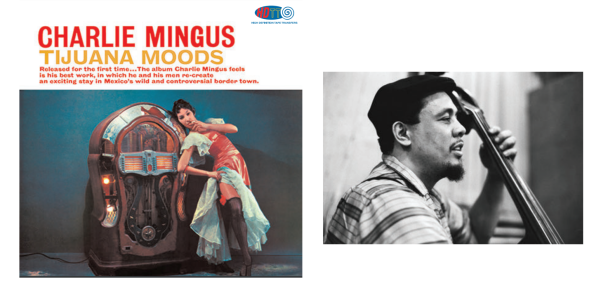
Charles Mingus - Tijuana Moods. With Shafi Hadi, Clarence Shaw, Jimmy Knepper, Dannie Richmond... HDTT 1957, 2016 (DXD) HERE
Recorded in 1957 but sat on by RCA until they finally released it in 1962. Nice to hear trombonist Jimmy Knepper! Completing the band is Ysabel Morel on vocals and Frankie Dunlop on castanets. Nice compositions, excellent playing, great recorded sound. Another good reminder of just how good recordings from the late 1950s actually sound when you hear them in good quality transfers like this one from HDTT.
Chet Baker - Chet. HDTT 1959, 2022 (DXD, DSD256) HERE
HDTT releases yet another classic album, and once again it is delivered in the best sound quality of any of the other digital releases I have in my music library. And how can you go wrong with collection of great jazz performers joining Baker: alto flautist Herbie Mann, baritone saxophonist Pepper Adams, pianist Bill Evans, guitarist Kenny Burrell, bassist Paul Chambers, and either Connie Kay (on six tracks) or Philly Joe Jones (on four tracks) playing drums. One just can't ask for a more stellar lineup. Though Baker was by the late 1950s known as much for his singing as his trumpet playing, this album is entirely instrumental. It contains 9 standard ballads
The album was recorded over two separate dates at Reeves Sound Studios in New York City on December 30, 1958 (tracks 1-3 & 5-7), and January 19, 1959 (tracks 4 & 8-10) for Riverside Records. The ever reliable recording engineer Jack Higgins delivers his usual very well balanced and detailed sound, and HDTT gives us a very nice, clean, open-sounding transfer. I've compared the sound quality of this HDTT release to the OJC-Riverside and APO SACD. The results of the comparison are what you'd expect: the HDTT has more air around the instruments, greater timbral density, more delicate highs, and more overall relaxed sound. In sum, the HDTT DXD and DSD256 releases are the clear sonic winners.
Thus far, I've assumed you know about Chet Baker. If you do, just stop here. For those who are not so familiar, read on...
From the album booklet for convenience: "Baker possessed one of the most melodious trumpets in jazz, compelling in its simplicity. Rarely extending his range above a single octave, he nonetheless had few peers when it came to slow, romantic ballads, which make up the playlist here. His characteristically soft approach is heard to good effect on "It Never Entered My Mind," where he works with the guitar of Kenny Burrell. Burrell and Baker also collaborate on a moving rendition of "September Song," a good place to hear Baker's special way with the horn, and is made even more attractive with the presence and contributions of top jazz artists.
"Chet Baker was a primary exponent of the West Coast school of cool jazz in the early and mid-50s. As a trumpeter, he had a generally restrained, intimate playing style and he attracted attention beyond jazz for his photogenic looks and singing. But his career was marred by drug addiction...
"Baker's drug addiction caused him to lead a disorganized and peripatetic life, his constant need for cash requiring him to accept many ill-advised recording offers, while his undependability prevented him from making long-term commitments to record labels. As a result, his discography is extensive and wildly uneven."
And, yet, his incredible musicianship is undeniable.
The Great Reunion - Louis Armstrong & Duke Ellington. HDTT 1963, 2018 (Pure DSD256) HERE
L-R: HDTT cover, original Roulette Records stereo cover (1963)
If you know this record, let's cut to the chase: Get this HDTT Pure DSD256 release! The sound quality is of the "blow you away" variety. It is simply outstanding—immediate, detailed, dynamic, alive, extended frequencies, and all the rest of those good words. This Pure DSD256 transfer sounds better than any digital or vinyl copy of the album that I've heard. It is a pure delight to hear.
For those of you not familiar with this album, it is the second album released from a single recording session in 1961, the only recording session with Ellington and Armstrong together. From this session, Roulette first issued Together For The First Time in 1961 and then this album, The Great Reunion, in 1963.
The music making is relaxed, yet spirited, with Armstrong and Ellington alternating between each other’s best-known songs. A nice feature of the album is hearing Duke Ellington's piano captured in such immediacy and detail. Ellington was an excellent pianist, but many of his recordings don't allow his piano to take center stage as with this album. Another nice feature is that there is no obvious competition going on; both Ellington and Armstrong comfortably give and take, supporting each other in a very collaborative way.
Nancy Wilson/Cannonball Adderley. HDTT 1961, 2018 (Pure DSD256) HERE
This album was recorded when the Cannonball Adderley Quintet had been performing together consistently and had really gelled. And the clean, crisp performances really show it. The pairing with Nancy Wilson is simply inspired.
Terrific, clean sound from a 15ips two-track tape directly to DSD256. I am completely impressed with the musicianship and the sound quality. This is heaven.
If you've only heard the CD, you've not heard the beautiful instrumental sounds and the voice of Nancy Wilson that are captured in this recording.
The Trio Live From Chicago - The Oscar Peterson Trio. HDTT 1961, 2023 (DXD, DSD256) HERE
This album is one of four that Verve recorded live on the nights of July 27 and 28 at Chicago's London House. Another is shown below. All four albums nicely capture the atmosphere and sound of a small jazz club. They are very nice recordings of live performances by this excellent Trio. Peterson, bassist Ray Brown and drummer Ed Thigpen seem to be telepathically connected. The intensity and energy of their combined efforts simply jump right out to us; they are in great form here.
The Oscar Peterson Trio that first became popular featured piano, bass (Ray Brown), and guitar, most notably Herb Ellis (1953 - 58). When Ellis left the group, he was replaced by drummer Ed Thigpen (1959 - 65). And it is the group with Ed Thigpen, who gives the group a drive and immediacy of sound that I find completely addictive. that we hear in this recording.
If you enjoy The Trio Live From Chicago, then I think you'll also enjoy The Sound of the Trio (below), also recorded live in July 1961 at The London House, Chicago. This second album continues with additional selections of great jazz performed by this excellent Trio. It was previously released by HDTT in 2015 and has now been re-mastered and re-released in better sound given HDTT's improved equipment.
The Sound of The Trio - The Oscar Peterson Trio. HDTT Redux 1961, 2023 (DXD, DSD256) HERE
Night at the Village Vanguard - Sonny Rollins, with Donald Bailey or Wilbur Ware on bass, Elvin Jones or Pete La Roca on drums. HDTT 1957, 2023 (Pure DSD256) HERE
This is an excellent transfer from the original tape release. And it sounds sooooo much better that my other digital releases, both the CD and the 24-192 release. As with other Pure DSD jazz releases from HDTT, this has much more of that wonderfully natural analog sound to it, with excellent detail and frequency extension. The performers are positioned very nicely in the mono soundstage, not projected or artificially highlighted as in the 24-192 release. The detail in saxophone and double bass is excellent, the timbre of the instruments sound spot-on, and nothing is artificially boosted or spotlighted as on the 24-192.
Note: Since this reissue is a transfer from the original tape, it does not include the bonus tracks that only appeared on much later reissues. If those bonus tracks are important to you, just know you'll have to get those elsewhere, but not in nearly the excellent sonics of this release.
Images courtesy of HDTT unless otherwise noted.




